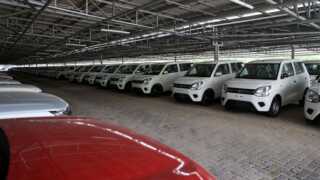According to SIAM, strong factors driving this growth included healthy demand, infra-investment, favorable government policies, and a push for sustainable mobility. A sound economic policy environment and good market sentiment also contributed to this upward trend. Shailesh Chandra, President, SIAM, said Passenger Vehicles, Two-Wheelers and Three Wheelers have shown growth in FY 2024-25 as comapred to FY 2023-24 – but growth rates differ in segments. Passenger Vehicles and Three-Wheelers witnessed a moderate growth on account of high base effect, but saw the highest ever sales in these categories, while the Two-Wheeler segment registered strong growth in FY2024-25. Also Read : Maruti Suzuki and Hero MotoCorp retain top spots in PV and two-wheeler spaces, end FY25 with sizeable market share: FADA Another best ever year for passenger vehiclesPassenger vehicles segemnt posted highest ever sales ever in FY 2024-25 with 43 lakh units, a 2 per cent increase over FY 2023-24. Utility Vehicles (UVs) remained the primary growth driver at 65 per cent of total PV sales, up from 60 per cent in FY 2023-24.Exports of passenger vehicles also reached a record high of 7.7 lakh units, a growth of 14.6 per cent. Demand for global models manufactured in India fueled export growth, particularly in Latin American and African markets, with some companies also beginning exports to developed economies. In Q4 FY25 (Jan-Mar 2025), domestic sales reached 11,62,560 units, and exports were 1,92,276 units. For March 2025, domestic sales were 3,29,742 units, and exports were 77,176 units. Also Read : Maruti Suzuki WagonR reclaims top spot in Indian PV market Continued growth for two-wheelersIn the fiscal year 2024–25, two-wheeler sales reached 1.96 crore units, exhibiting growth momentum of 9.1 per cent year-on-year. Recovery in this segment was aided by higher demand from rural areas and greater consumer confidence. The growth was led by the scooter segment based on better rural and semi-urban connectivity with the traffic and the introduction of newer models with better features. Also Read : Hero MotoCorp tops two-Wheeler sales for 24th year, maintains market leadership In FY 2024-25, domestic sales were 19.6 million units, and exports reached 42 lakh units. Meanwhile, March 2025 saw domestic sales of 16,56,939 units, while the exports were clocked at 3,64,812 units, which is a 11.5 per cent increase over the same period last year. Rajesh Menon, Director General, SIAM, stated that two-wheelers witnessed a good growth of momentum 9.1 per cent in this financial year, compared to last year, with sales of 1.96 crore units Upward trajectory for electric vehiclesTotal EV registrations in FY 2024-25 reached 19.7 lakh units, compared to 16.8 lakh units in FY 2023-24, a growth of 16.9 per cent. Electric passenger vehicle (EV) vehicle registrations surpassed the 1,00,000 unit mark, with an 18.2 per cent increase. Also Read : Delhi’s EV Policy 2.0 targets 95% electric vehicles by 2027, 20,000 jobs on the horizon Electric two-wheeler registrations increased by 21.2 per cent to 1.15 million units. Growth in EVs has been presaged by public policy initiatives and new EV entrants from manufacturers. What’s next for Indian auto industryAll segments of the Indian automotive industry are anticipated to continue their growth strategy in FY 2025-26. Stable macroeconomic conditions, supportive government policies, and spending trends towards infrastructure, will be the key drivers to growth. A predicted normal monsoon for 2025 is expected to stimulate economic activity, particularly in rural and semi-urban economies, which will drive growth in auto sector demand. Chandra added that In FY2024-25, the Government of India introduced the PM E DRIVE scheme and PM e-Sewa schemes which underscores the firm commitment of the Government towards promoting sustainable mobility. Looking ahead, the backdrop of a stable policy environment, along with recent measures such as reforms in personal income tax and RBI’s rate cuts, will help in supporting consumer confidence and demand across segments. The changes in personal income tax and important rate cuts recently made by the Reserve Bank of India (RBI) will improve access to vehicle financing and encourage further demand. Exports will remain buoyant, with ‘Made in India’ vehicles gaining traction in Africa, among other geographies. The industry will continue to watch macroeconomic indicators and global geopolitical developments. Get insights into Upcoming Cars In India, Electric Vehicles, Upcoming Bikes in India and cutting-edge technology transforming the automotive landscape. First Published Date: 15 Apr 2025, 11:40 AM IST
Source: hindustantimes.com






